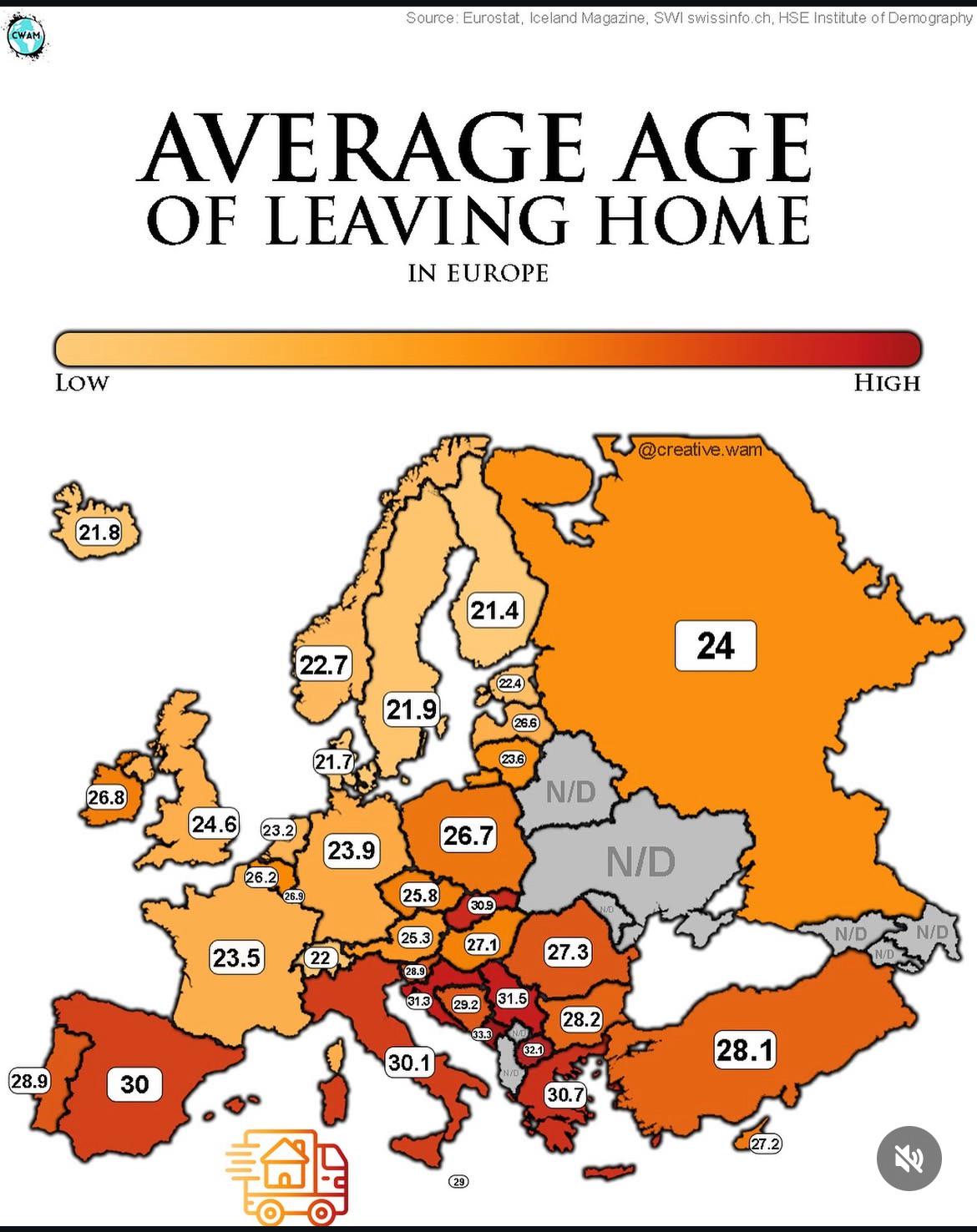Emigration Patterns in Europe Map


Marcus Rodriguez
Historical Geography Expert
Marcus Rodriguez specializes in historical cartography and geographic data analysis. With a background in both history and geography, he brings unique...
Geographic Analysis
What This Map Shows
The "Leaving Home in Europe" map visually represents the emigration patterns across various European countries. It highlights the regions with the highest rates of emigration, illustrating where residents are choosing to relocate and the potential reasons behind those movements. This visualization is essential for understanding demographic trends, economic influences, and social dynamics in Europe today.
Deep Dive into Emigration Patterns in Europe
Emigration has been a significant aspect of European history, influenced by various factors such as economic opportunities, political stability, and social conditions. In recent years, the trend of leaving one’s home country has continued, driven largely by the quest for better job prospects, higher education, and improved living conditions abroad.
Interestingly, according to Eurostat, around 1.6 million EU citizens emigrated in 2021 alone, which showcases the ongoing mobility within and outside the continent. Countries like Romania, Poland, and Portugal have historically seen high emigration rates, often fueled by economic challenges and the allure of more prosperous nations like Germany, the UK, and France.
Have you ever wondered why people choose to leave their homeland? For many, it stems from a combination of push and pull factors. Push factors might include high unemployment rates, political instability, or even environmental issues such as climate change. In contrast, pull factors often include the promise of better job markets, educational opportunities, or simply the desire for a different lifestyle.
In terms of demographics, younger individuals, especially those aged 18-34, are the most likely to emigrate. They seek adventure, education, and employment, contributing to what is known as the 'brain drain' phenomenon in their home countries. This is particularly evident in Eastern Europe, where countries like Bulgaria and Hungary have seen their younger population migrate elsewhere for better opportunities.
Furthermore, the COVID-19 pandemic has shifted migration patterns as many individuals reassess their living situations and goals. Remote work has allowed some to maintain jobs while living in different countries, leading to a rise in temporary migrations and a more fluid approach to where people consider 'home.'
Regional Analysis
Analyzing the emigration patterns by region reveals stark differences across Europe. For instance, Southern European countries like Greece and Spain have seen a resurgence in emigration following economic crises, with many young professionals relocating to Germany or the UK in search of stability. In contrast, Northern European countries such as Sweden and Denmark typically have lower emigration rates, attributed to their strong economies and robust social welfare systems.
In Eastern Europe, the migration trend is even more pronounced. Countries like Poland have exported significant numbers of workers, particularly to the UK and Ireland, where they find better job prospects. The allure of Western European wages, often double or triple those at home, is a major motivating factor.
Interestingly, the map also highlights areas like Switzerland, which, despite its high cost of living, attracts a substantial number of immigrants due to its strong economy and quality of life. This juxtaposition raises questions about how economic disparities influence migration patterns across the continent.
Significance and Impact
Understanding emigration patterns is crucial for several reasons. Economically, the emigration of skilled labor can lead to a 'brain drain,' which may hinder the development of the home country. In contrast, the receiving countries benefit from the influx of talent and skills, which can stimulate growth and innovation.
Socially, high emigration rates can lead to demographic shifts, impacting everything from local cultures to national policies. Countries with declining populations may struggle to maintain their workforce, leading to changes in immigration policies to attract new residents.
Looking ahead, the trends suggest that emigration will likely continue as globalization increases and people seek new opportunities. Climate change, political unrest, and economic fluctuations will further influence these patterns, making it essential for policymakers to understand and adapt to these dynamics. Therefore, the "Leaving Home in Europe" map is not just a snapshot of current trends; it’s a vital tool for anticipating future shifts in population and economic landscapes across the continent.
Visualization Details
- Published
- October 2, 2025
- Views
- 48
Comments
Loading comments...